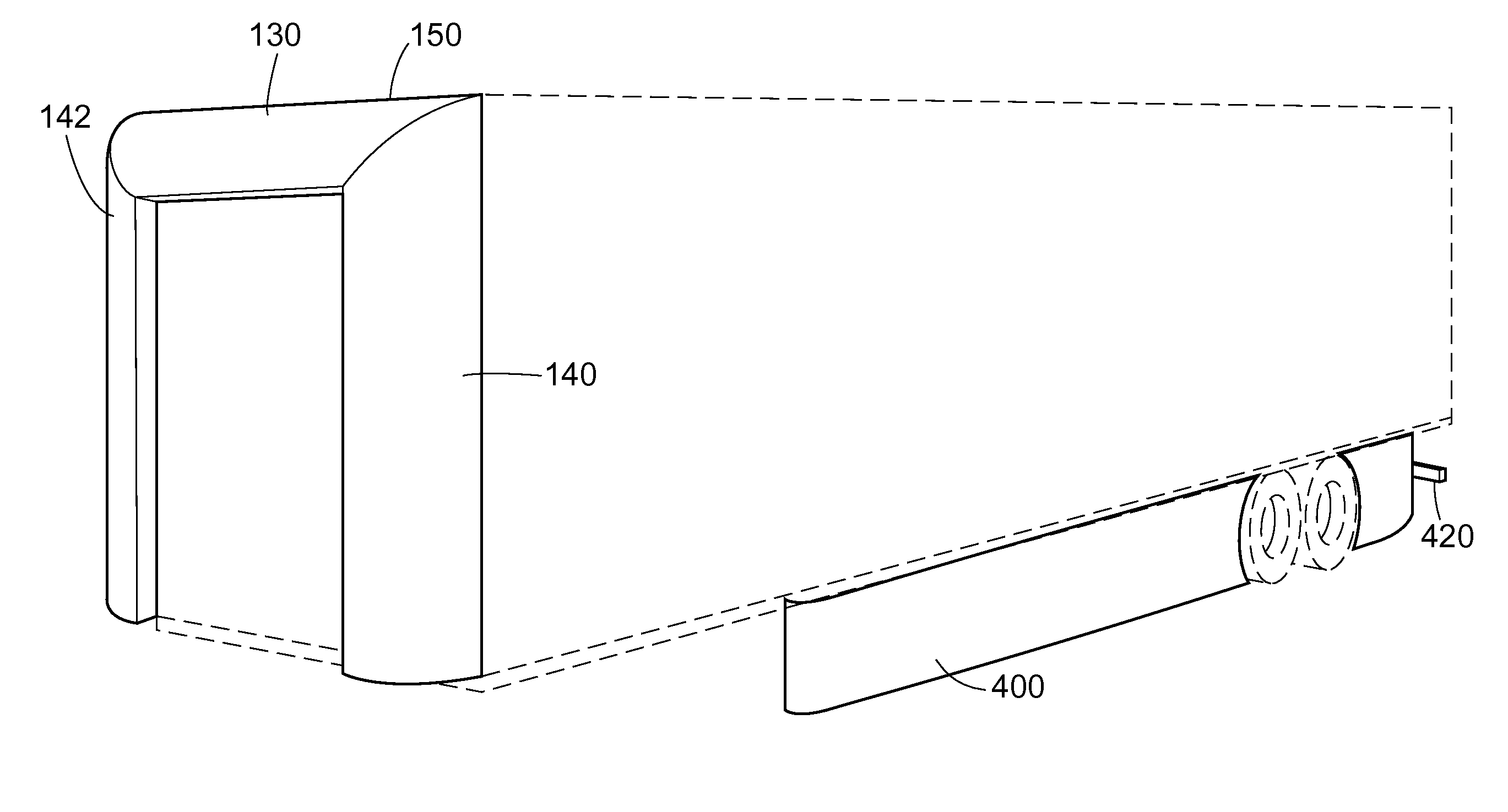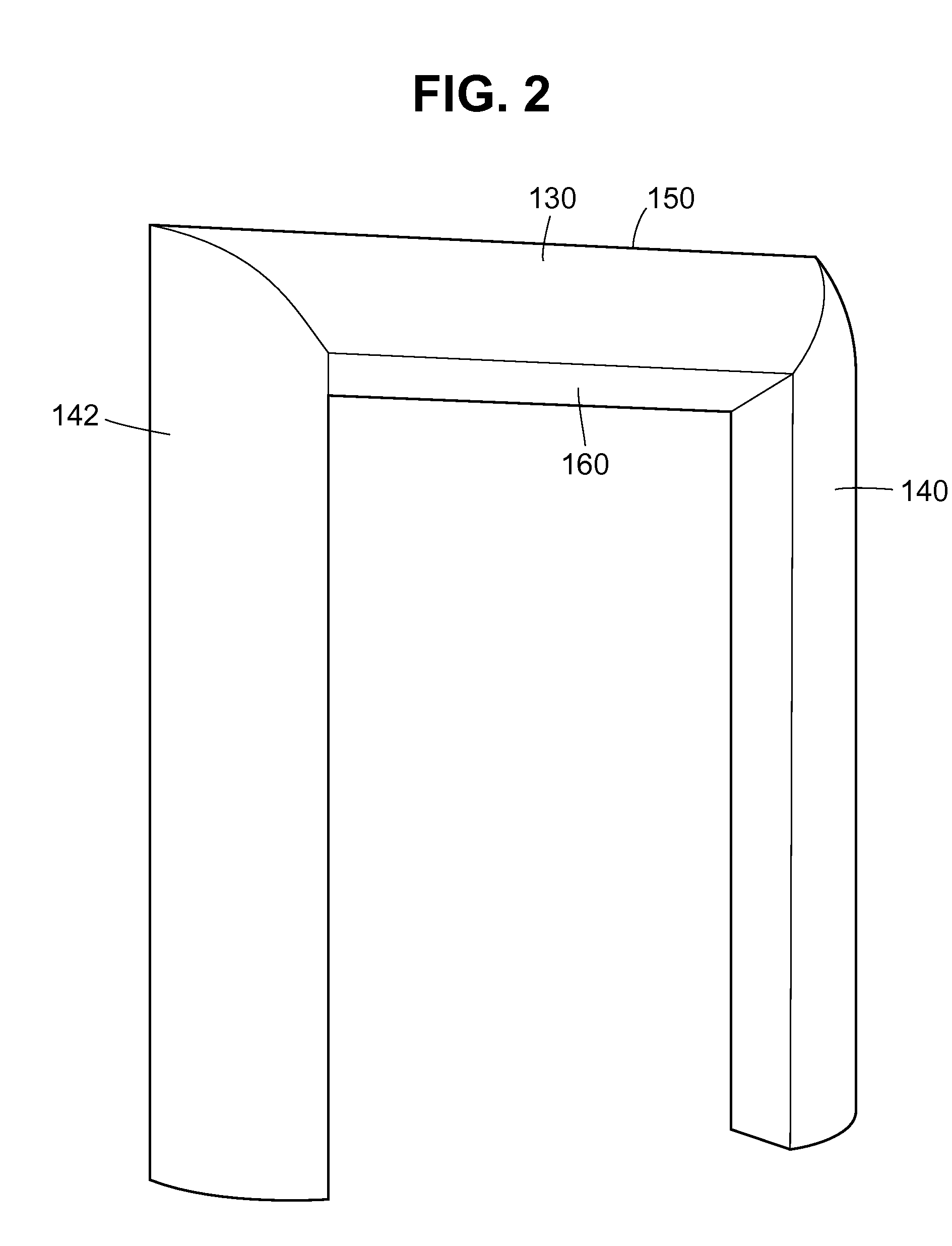Vehicle fairing system
a technology for fairings and vehicles, applied in the direction of roofs, transportation and packaging, vehicle arrangements, etc., can solve the problems of increasing fuel consumption, increasing the cost of operation, and causing significant drag, so as to improve the aerodynamic profile of vehicles, reduce the amount of power, and optimize the efficiency of vehicles.
- Summary
- Abstract
- Description
- Claims
- Application Information
AI Technical Summary
Benefits of technology
Problems solved by technology
Method used
Image
Examples
Embodiment Construction
[0021]It is believed that the vehicle fairing system disclosed herein significantly increases the efficiency of vehicles, particularly tractor-trailers, by improving their aerodynamic profile, and thus reducing aerodynamic drag, without affecting loading and unloading operations.
[0022]The large rectangular ends of typical trailer boxes create an area of reduced pressure behind the trailer box as it moves over the highway. In addition, in such tandem vehicle arrangements, the rear vehicular component often projects above the front vehicular component and thus causes additional aerodynamic drag of a type referred to as form drag. Also, in such tandem vehicle arrangements, the rear vehicular component is separated from the front vehicular component by a gap, which also creates aerodynamic drag. All of these phenomena increase wind resistance, and thus decrease the efficiency of the vehicle. Still further, air currents are produced underneath a moving tractor-trailer, which also increas...
PUM
 Login to View More
Login to View More Abstract
Description
Claims
Application Information
 Login to View More
Login to View More - R&D
- Intellectual Property
- Life Sciences
- Materials
- Tech Scout
- Unparalleled Data Quality
- Higher Quality Content
- 60% Fewer Hallucinations
Browse by: Latest US Patents, China's latest patents, Technical Efficacy Thesaurus, Application Domain, Technology Topic, Popular Technical Reports.
© 2025 PatSnap. All rights reserved.Legal|Privacy policy|Modern Slavery Act Transparency Statement|Sitemap|About US| Contact US: help@patsnap.com



